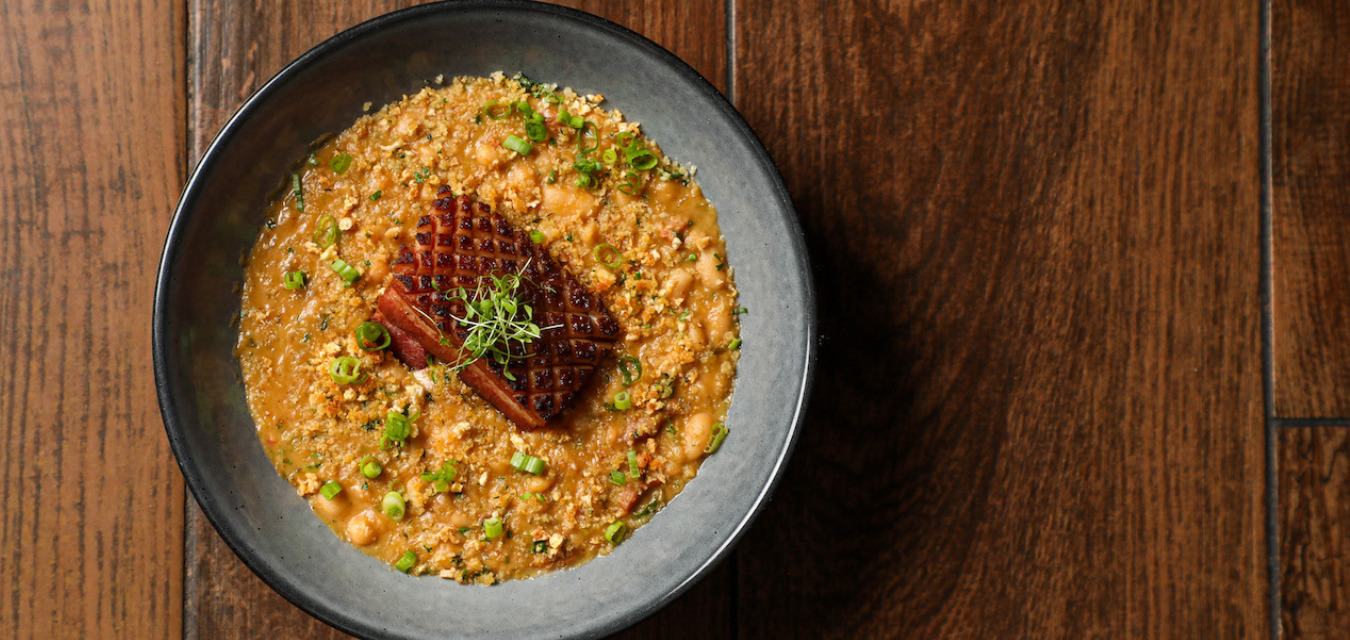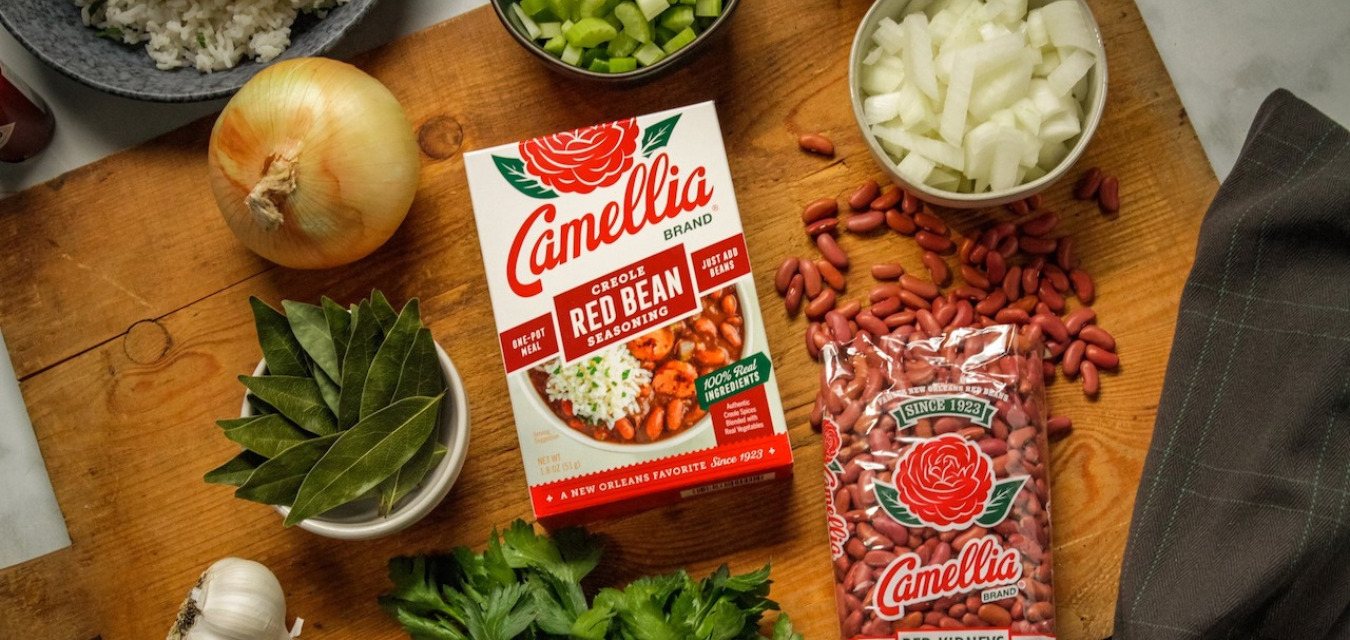Sometimes a bean is not just a bean. In New Orleans, where Monday is synonymous with red beans and rice, the humble bean is a portal into the joy of sharing love with friends and family around the table. For most home cooks in New Orleans and throughout the South, the dish is made with Camellia beans.
It’s been one hundred years since L. H. Hayward formally founded the Camellia brand of dried beans in New Orleans, a century in which some things thankfully stayed the same, while the company evolved technologically in leaps and bounds. Now helmed by great-grandson Vince Hayward, Camellia beans is responsible is for 19 varieties of quality dried beans, 200,000 pounds of which are sorted and packaged every day at the company’s main processing plant in Elmwood, Louisiana.
“Camellia beans is my go-to,” says Daren Porretto, chef de cuisine at Saint John, a newish old-school creole restaurant in the French Quarter. Porretto grew up in the Irish Channel and recalls Camellia beans simmering in his mother’s and grandmother’s kitchens. “It was the only kind of beans in our kitchen at home,” he says. Camellia white beans are at the heart of one of his favorite menu items, creole white bean cassoulet with toasted cornbread. “Something about those beans, they hold up to soaking and cook to a perfect, creamy consistency.”
The company that became Camellia dates even farther back to Hayward’s great-great grandfather Sawyer, who came to New Orleans from Bermuda in 1850, bringing a knowledge of both beans and dried goods to the French Market. His son, Lucius Hamilton Hayward, named the company for his wife’s favorite flower.
Although the family has seen many milestones and disruptions in its first century of business—the advent of consumerism and supermarkets around World War II, Hurricane Katrina, September 11, the passing of the Food Safety and Modernization Act in 2011, the rise of social media—one thing will never change: the way Camellia beans are harvested and dried on farms across the US. The bean plants are cut and laid on their side to rest. A few days later, they are flipped to the other side to continue the process. Then a combine passes by, separating the dried beans from their vegetation, which stays in the field to enrich the soil. “That’s the way it’s always been done,” Hayward says. “That method gives us the best possible beans, every time.”

Creole White Bean Cassoulet with Braised Pork Belly
share
trending content
-
Get To Know Roanoke, Virginia
-
New Myrtle Beach Restaurants Making Waves
-
Shrimp and Grits: A History
by Erin Byers Murray -
FINAL VOTING for Your Favorite Southern Culinary Town
-
New Restaurants in Arkansas
More From Key Ingredient
-
Caramel Delights
-
Jason Stanhope’s Famous Celery Salad
-
Little Bursts of Summertime
-
A Better Butter Bean
-
Key Ingredient: Preserved Lemons








